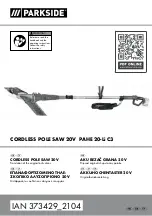
3. ASSEMBLY AND SET UP CHECKS
2. INTRODUCTION & SPECIFICATIONS
2.1.
Introduction.
The SM16/1, SM17/1 and SM18/1 power hacksaws are manufactured to comply with Supply of Machinery (Safety)
Regulations 1992 (S.I.3073). Cast base with integral mitring vice and setting bar for repetition cutting. Machined
saw arm runners with wear shims for smooth cutting performance. Automatic power cut-off stops machine after
completion of cutting. Fitted with heavy duty 230Volt single phase electric motor and an approved 3 pin safety plug.
SM17/1 and SM18/1 supplied with a belt driven coolant pump system to lubricate and cool the workpiece. Fully
guarded pulley and drive assembly.
WARNING!
These hacksaws
MusT NOT
be used to cut
non-metallic materials
(including wood) as to do so will invalidate your insurance
cover and your warranty and may cause damage and/or personal injury.
DO NOT wear loose or ill-fitting clothing. Remove ties, watches, rings and other jewellery. Tie up, or adequately cover, long hair.
DO NOT start machine until workpiece is secure and the blade has been lowered to just above the workpiece.
DO NOT use the hacksaw with the blade guard or pulley cover removed.
DO NOT use damaged or deformed hacksaw blades.
Turn the saw off
before
raising the blade.
DO NOT run the saw with the blade in the raised position.
DO NOT use the machine in wet or damp locations.
DO NOT use the machine in areas where fumes from paint, solvents, or flammable liquids pose a potential hazard. Keep all
flammable materials (including wipers or cleaning rags) away from the saw, and dispose of according to local regulations.
DO NOT stand on the machine.
DO NOT leave machine running unattended. Turn power switch ‘Off’ and do not leave area until machine has come to a complete stop.
DO NOT operate the saw when you are tired, under the influence of alcohol, drugs or intoxicating medication.
2.2.
Specifications
Model No
SM16/1
SM17/1
SM18/1
Capacity at 90º (mm)
180 X 180
185 X 185
205 X 205
Capacity at 45º (mm)
90 X 180
90 X 185
110 X 205
Motor
375W 230V
375W 230V
375W 230V
Size of blade
400 X 25 X 1.25mm
400 X 25 X 1.25mm
400 X 32 X 1.6mm
Cutting speed
50/70 strokes/min
50/70 strokes/min
60/80 strokes/min
Working floor area required
1020 X 350mm
1020 X 350mm
1050 X 370mm
Weight
110kg
115kg
140kg
Note:
Letters in brackets refer to Fig.1.
3.1. Glass oiler
3.1.1. The glass oiler ensures constant lubrication between the bow saw and the saw arm.
3.1.2. Screw the glass oiler into the mounting on the saw bow, as shown in (A).
3.1.3. Fill the oiler with light machine oil.
3.1.4. Adjust the rate of flow by turning the serrated collar on the top of the oiler.
3.2. Oil caps
3.2.1. There are five oil caps fitted to the saw, (B1 - B5).
3.2.2. Remove the six self tapping screws in the guard, (C, only two shown) and fold it
down.
3.2.3. Identify the two oil caps on the frame support (B1 & B2) and the two on the saw
arm, (B3 & B4).
3.2.4. Lift each cap in turn and fill the cups with light machine oil. Allow time for the oil
to penetrate and refill as necessary.
3.2.5. Fold the guard into position and refit the six screws removed in paragraph 3.2.2.
3.2.6. The fifth oil cap is fitted on the connecting rod, (B5). Lift the cap and fill the cup
with light machine oil.
3.3. Length bar
3.3.1. When cutting multiple same length pieces, the length bar and length plate can be
fitted to save the operator having to measure the item to be cut each time.
3.3.2. Screw the length bar (D) into the side of the saw bed and tighten the locking nut.
3.3.3. Adjust the length plate (E) to the required position and lock in place by
tightening the “T” head bolt (F).
3.4. Blade tension
3.4.1. Check the blade tension by flicking the blade. The blade should make a sharp
pining sound if it is properly adjusted.
3.4.2. If the blade needs adjusting, refer to paragraph 5.3.
3.5. Coolant tank (Models SM17/1 and SM18/1 only)
3.5.1. Fill the cooling tank, attached to the underside of the saw bed, with cutting oil
Fig.1.
by pouring through the slots in the saw bed into the coolant tank. Ensure the supply tap at the base of the coolant pipe is turned off.
Note:
Neat cutting oil, part no NCO/5L and soluble cutting oil SCO/5L are available from your local Sealey dealer.
3.6. Saw arm weight
3.6.1. Fit the saw arm weight, (G) onto the saw arm to increase the cutting weight if required.
Original Language Version
SM16/1, SM17/1, SM18/1 Issue: 2 - 08/12/09























